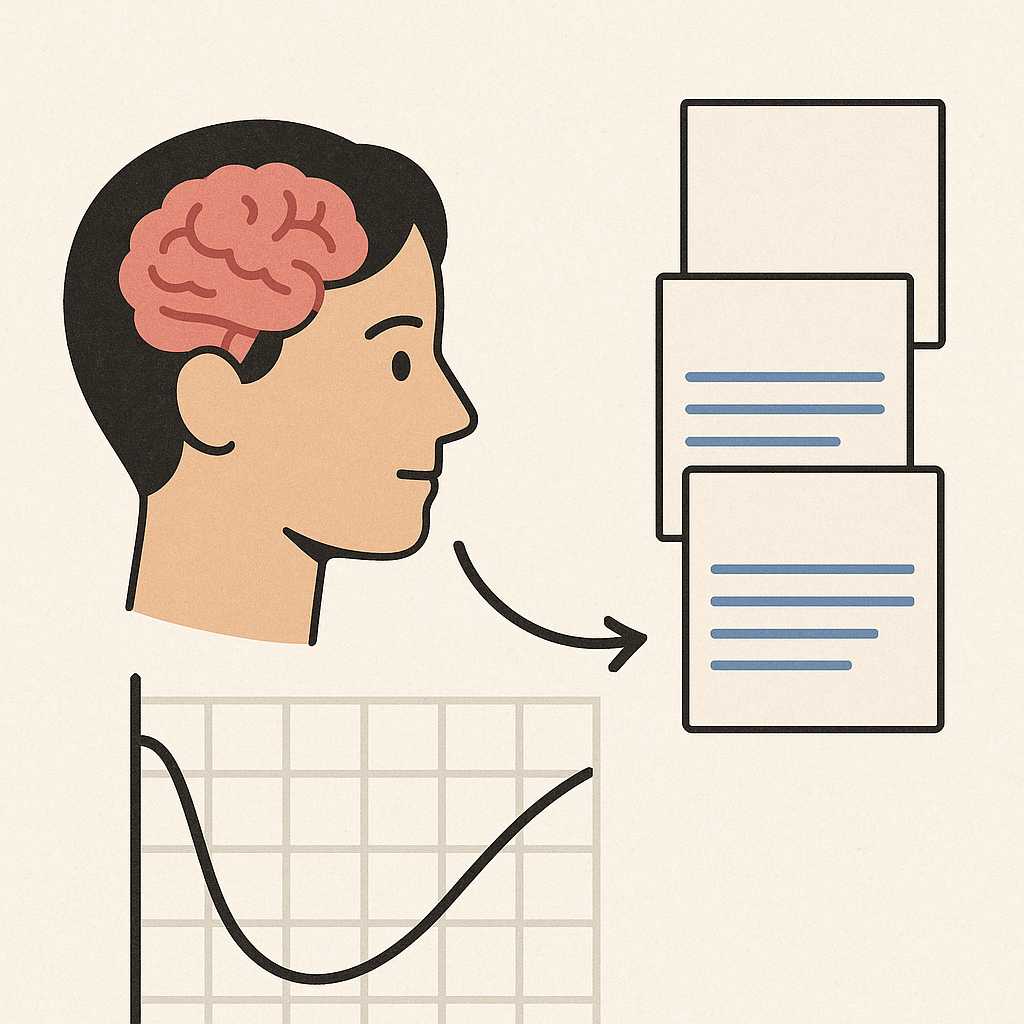The Power of Spaced Repetition for Your ACA Studies

We have been there.
Aspiring ACA Chartered Accountants face an absolutely monumental challenge: the sheer volume and complexity of material that must be mastered to succeed in exams and, ultimately, in their professional careers.
From intricate financial reporting standards to nuanced tax regulations and audit procedures, the ACA syllabus is both broad and deep.
Traditional study techniques—cramming, passive reading, or last-minute revision—often fall short when confronted with such a vast knowledge base.
This is where spaced repetition emerges as a game-changing strategy, offering a scientifically proven method to maximize retention, minimize forgetting, and optimize study time.
Why the ACA Syllabus Demands Smarter Study
ACA students are expected to internalize thousands of pages of technical material, case law, and professional standards, generally while juggling work and personal commitments.
The risk of forgetting key details is high, especially when relying on massed practice (cramming) or passive review.
With the rise of online learning, many students can fool themselves into thinking they are "studying" when in fact they are just passively watching a screen.
Understanding Spaced Repetition: How It Works
Spaced repetition is a learning technique that involves reviewing information at strategically increasing intervals. Rather than revisiting material in one long session, you review it just as you’re about to forget it.
This approach is grounded in the science of memory, specifically the Ebbinghaus Forgetting Curve, which shows that our ability to recall information declines rapidly after initial learning unless reinforced through timely review.
Key Principles:
- Optimal Timing: Review material just before you’re likely to forget it, which strengthens memory and increases the interval before the next review is needed.
- Active Recall: Instead of passively reading, spaced repetition encourages you to actively retrieve information from memory, reinforcing neural pathways and making the knowledge stick.
- Personalization: Modern spaced repetition tools (see below) adjust review schedules based on your performance, focusing more on challenging material and less on what you already know.
Benefits of Spaced Repetition for ACA Students
1. Enhanced Long-Term Retention
Spaced repetition combats the natural decline in memory retention, ensuring that knowledge is stored in long-term memory. For ACA students, this means you’ll remember crucial accounting standards, formulas, and procedures not just for exams, but for your career.
2. Increased Study Efficiency
By focusing your efforts on material you’re most likely to forget, spaced repetition reduces wasted time and energy. You spend less time reviewing what you already know and more time reinforcing weaker areas, making your study sessions far more productive.
3. Reduced Exam Stress and Cramming
Because spaced repetition distributes learning over time, it eliminates the need for last-minute cramming. This leads to a calmer, more consistent study routine and reduces anxiety as exams approach.
4. Deeper Understanding and Application
Active recall and repeated exposure at spaced intervals promote a deeper understanding of complex concepts. This is vital in accountancy, where application and analysis are as important as rote memorization.
5. Personalization and Adaptability
Spaced repetition tools adapt to your individual learning pace, strengths, and weaknesses. This personalized approach ensures that your study plan evolves as you progress, keeping you challenged and engaged.
How Spaced Repetition Algorithms Work
And now, here's your secret weapon, capitalizing on advancements in AI ... modern spaced repetition systems use sophisticated algorithms to schedule reviews.
These algorithms predict the optimal time to review each piece of information, based on your previous performance and the difficulty of the material.
When you mark content as difficult, the system will show it more frequently; if you find it easy, the interval before the next review increases.
This adaptive approach ensures that:
- Difficult concepts are reinforced until mastered.
- Easy concepts are reviewed less often, freeing up time for more challenging material.
- The overall number of repetitions is minimized, maximizing efficiency.
We believe that these are the main benefits of a spaced repetition approach as compared to traditional reading and note-taking: spaced repetition can give you laser focus on what you need to study rather than leaving you spreading your time equally over an overwhelming amount of material as with traditional reading and note-taking.
Free Flashcard Programs for Spaced Repetition
Technology has made it easier than ever to implement spaced repetition in your study routine.
Several free flashcard apps leverage powerful algorithms to optimize your learning:
Anki
- Platform: Windows, Mac, Linux, Android (free), iOS (paid, but browser version is free)
- Features: Open-source, highly customizable, supports images, audio, and shared decks; uses a modified SM-2 algorithm for precise scheduling.
- Best For: Students who want full control over their flashcards and study schedule.
- How It Works: You create or download decks, review cards, and rate your recall. The algorithm schedules reviews based on your feedback, ensuring difficult cards appear more often.
Brainscape
- Platform: Web, iOS, Android
- Features: Uses a “confidence-based repetition” algorithm; user-friendly interface; tracks progress and adapts to your learning pace.
- Best For: Those who prefer a guided, less technical experience.
- How It Works: Rate your confidence in each answer; Brainscape adapts the frequency of reviews accordingly.
Flashcards World
- Platform: Web, iOS, Android
- Features: Free, science-backed spaced repetition, easy card creation, syncs across devices, works offline.
- Best For: Quick setup and cross-device studying.
- How It Works: Create or import flashcards, and the app’s algorithm optimizes your review schedule for maximum retention.
Mnemosyne
- Platform: Windows, Mac, Linux
- Features: Free, open-source, supports spaced repetition, but with fewer features and a less modern interface than Anki.
- Best For: Simplicity and open-source enthusiasts.
Mochi
- Platform: Windows, Mac, Linux, Web
- Features: Focuses on simplicity and markdown support; free for basic use.
- Best For: Minimalists who want a distraction-free experience.
Implementing Spaced Repetition in Your ACA Study Routine
Step-by-Step Guide:
- Identify Key Topics: Break down the ACA syllabus into manageable chunks—standards, formulas, definitions, procedures.
- Create Flashcards: Use one of the free apps above to make flashcards for each concept. Include questions, scenarios, and worked examples.
- Start Reviewing: Begin your reviews as soon as you learn new material. The sooner you start, the better your long-term retention.
- Follow the Algorithm: Trust the app’s scheduling. Focus your energy on cards that appear more frequently—they represent your weaker areas.
- Regularly Update: Add new cards as you progress through the syllabus and archive cards you’ve truly mastered.
- Mix in Practice Questions: Try to create cards that test not just recall, but application and analysis by asking yourself questions.
Sample Spaced Repetition Schedule:
- Day 1: Learn new material, create flashcards.
- Day 2: First review.
- Day 4: Second review.
- Day 7: Third review. Then continue reviews as scheduled by your app.
Evidence Supporting Spaced Repetition
The effectiveness of spaced repetition is well-established in cognitive science. Studies consistently show that students who use spaced repetition outperform those who rely on massed practice or passive review, especially in subjects with a large body of knowledge like accountancy.
In a review of over 800 academic papers, more than 96% found statistically significant improvements in learning outcomes when spaced repetition was used.
Addressing Common Concerns
“Isn’t Spaced Repetition Time-Consuming?”
While spaced repetition may seem to require more frequent study sessions, it actually reduces overall study time by focusing your efforts where they’re needed most. Short, regular sessions are far more effective than marathon cramming.
“What If I Get Bored?”
Mix up your flashcards with different question types—definitions, scenarios, calculations, and even ethics dilemmas. Many apps support images and audio, making reviews more engaging.
“I’m Not Tech-Savvy—Is This Complicated?”
Most modern apps are user-friendly, with intuitive interfaces and plenty of tutorials. Start simple—create basic question-and-answer cards—and build complexity as you grow more comfortable.
"Won't It Take Time to Create My Revision Content?"
Yes, it will ... just as with any other form of revision, so why not put that time into a technique that is proven to be effective rather than "saving" time by doing purely passive studying?
Beyond Flashcards: Integrating Spaced Repetition with Other Techniques
- Active Recall: Always try to answer the question before flipping the card. This strengthens memory far more than passive review.
- Peer Study: Share decks with classmates or collaborate on creating comprehensive sets.
Final Thoughts: Maximize Your ACA Success with Spaced Repetition
The journey to becoming an ACA Chartered Accountant is demanding, but with the right strategies, you can turn the challenge into an opportunity for deep, lasting learning.
Spaced repetition is not just a study hack—it’s a scientifically validated method that aligns with how your brain naturally learns and retains information. By embracing this approach and leveraging free, powerful flashcard apps, you can conquer the vast ACA syllabus with confidence, efficiency, and less stress.
Remember: If you ever feel overwhelmed by the volume of material or need extra support, we’re here to help. Our team offers custom notes, technical summaries, and tailored solutions designed specifically for ACA students. Whether you need concise revision notes, model answers, or guidance on exam technique, don't hesitate to get in touch—we’re here to help!




Comments ()